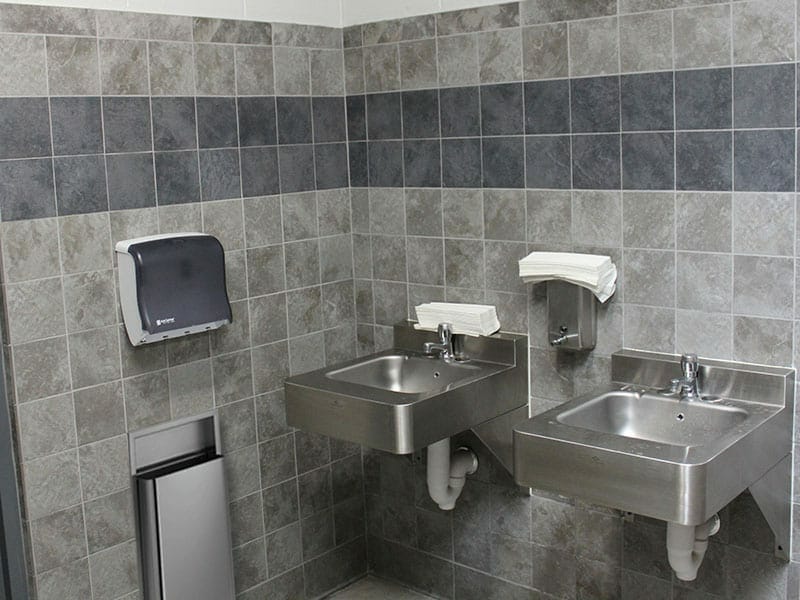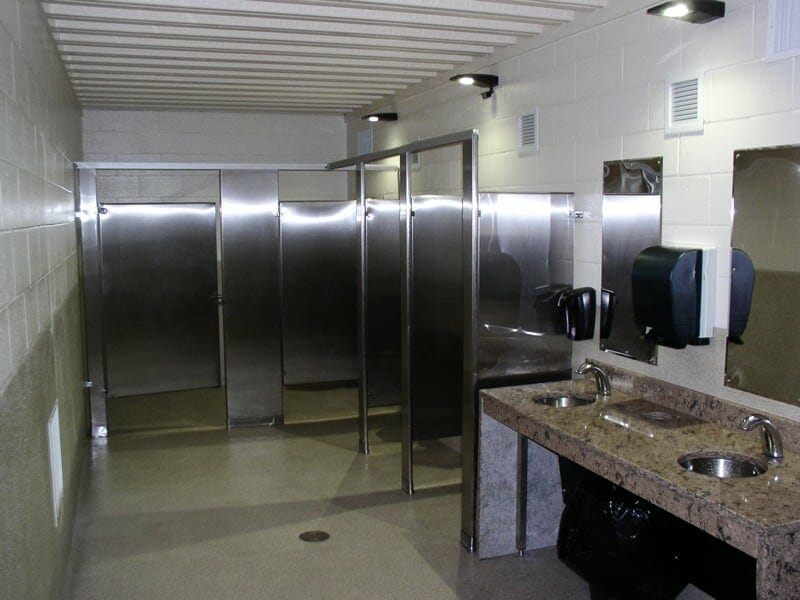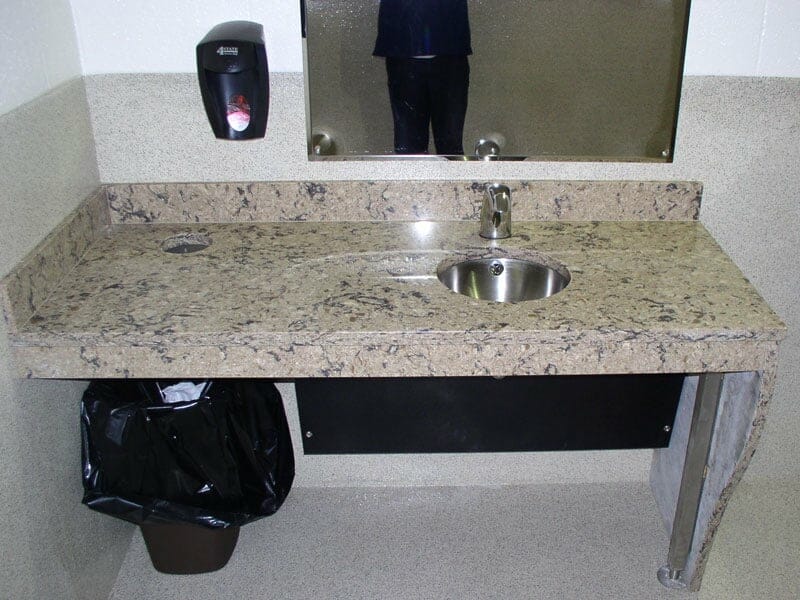
Romtec has designed and supplied thousands of buildings for both public and private restroom applications. Public restrooms are infamous for their susceptibility to vandalism, and this is especially true for the trash cans inside them. Waste receptacles are often overlooked during the design of a new building in favor of flashier building features. However, trash bins can have significant impacts on the functionality and visual appeal of a restroom interior depending on the chosen material, shape, and how it is installed.

Trash Bin Materials
When considering which trash can to use for your building, the material it is constructed with is one of the most important choices that will be made. Most trash bins designed for a public restroom environment are made to be highly durable. Keeping this in mind, some materials are better equipped to handle damage and offer unique advantages. Stainless steel is frequently chosen in public restrooms due to the natural resistance of the material to many forms of damage. Plastic is another popular choice. While plastic does not offer the same level of protection from physical damage, plastic is a much more affordable material, and bins can be replaced for relatively cheap. Material is only one factor when choosing the best trash bins, there are also different shapes and styles of receptacles.
Trash Bin Fitting the Interior Design
Typically, trash canisters inside a restroom are no-frill utilities that are placed in the corner and forgotten until needed. For some restrooms, this is not the case. Creating a unique and appealing interior restroom design requires coordination from every element available. The variety of different shapes and sizes of trash cans, water fixtures, and other accessories available allows our customers to completely customize their buildings to meet their vision. Depending on the layout of the restroom, trash cans with irregular shapes can be fitted into nooks or empty spaces in the wall. Alternatively, some trash receptacles can be integrated into the design of your building and fixed directly to the walls of the restroom.

Preventing Vandalism and Improving Access with Trash Can Placement
One common design practice to hinder vandalism is to remove access to breakable objects. This is where the style of trash bin becomes important. Free standing bins, although not considered “breakable” by standard definitions, can be damaged by vandals and even used as a tool to inflict damage other interior accessories. Different styles of waste receptacles can be included to prevent vandalism without hindering visitor access. Installing bins beneath a sink or in a wall recess will negate many of the disadvantages of a free standing trash can. Under-sink installations are most effective for larger trash cans since overflowing rubbish will spill over without being noticed until maintenance personnel arrives to change it. Installing receptacles directly into the wall is a practical choice that will save space and remove objects from floor space which is sometimes required for ADA accessibility compliance. Each style is suitable for many applications and Romtec has used every style available in our restroom buildings over the years.

Trash Can Style and Placement in a Romtec Restroom Design
Choosing the best material, shape, and style of installation for trash cans in your building is an important, but often overlooked detail in restroom design. Different restroom applications and design preferences will have a large impact on which trash bin will be chosen. Romtec has often seen that this small detail can be ignored and otherwise great looking restrooms are forced to simply place a separate trash can into the building interior. Contact one of our Sales Engineers for more information our restroom buildings and how to get the best design possible through every detail big or small!
